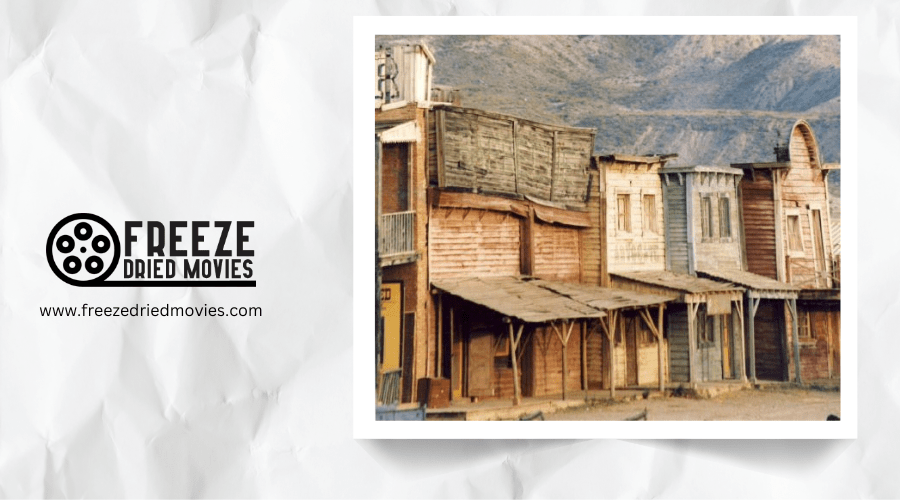From Sardinia to Rome: Iconic Spaghetti Western Filming Spots
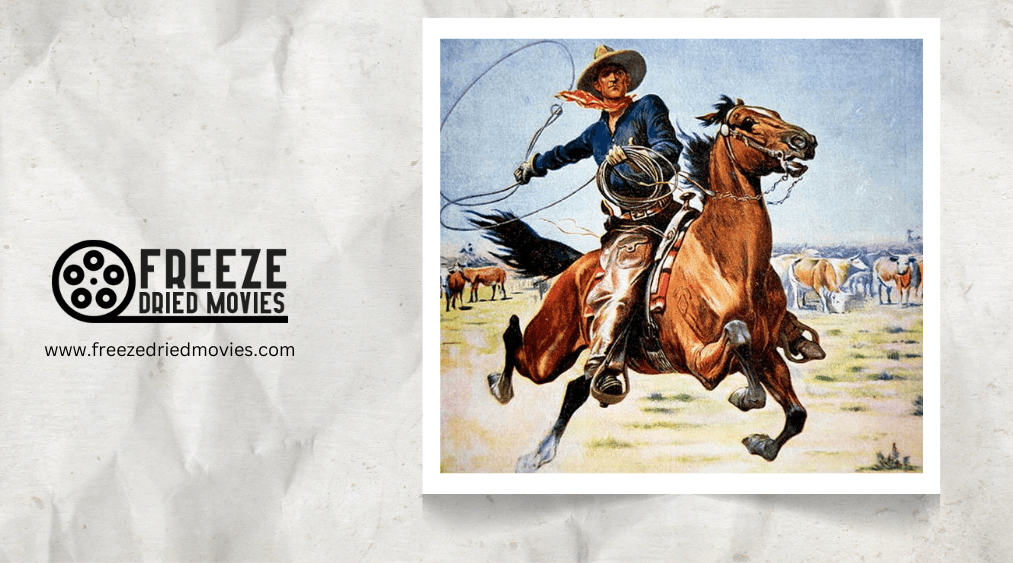
You might imagine the American West when thinking of cowboys and gunfights, but Italy's diverse landscapes tell a different story. From Sardinia's sun-baked villages to Rome's meticulous studio sets, the iconic Spaghetti Western genre found its unlikely home far from Monument Valley. The abandoned mining settlement of San Salvatore di Cabras and the bustling Cinecittà Studios shaped cinema history in ways few recognize. What frontier secrets lie within these Mediterranean locations?
Iconic Spaghetti Western Filming Spots
The forgotten landscapes of Italy's diverse terrain played an essential role in creating the distinct visual identity of spaghetti westerns. When you explore these iconic filming locations, you'll discover how directors like Sergio Leone transformed Mediterranean settings into convincing American frontier towns.
In Sardinia, the abandoned mining village of San Salvatore di Cabras served as a backdrop for numerous Italian Westerns, including the lesser-known "Garter Colt." The ghostly buildings provided authentic frontier aesthetics without expensive set construction.
While Spain's Tabernas Desert and Almería region hosted many famous shootouts, Italy's contributions to the genre remain underappreciated. Producer Gian Andrea Rocco specifically chose Italian locations to give his films a distinctive look that differentiated them from their American counterparts. You'll notice how these unique landscapes became characters themselves, enhancing the genre's distinctive visual style.
These atmospheric techniques were inspired by the pioneering Hays Code restrictions that forced filmmakers to rely on subtext and visual storytelling rather than explicit content.
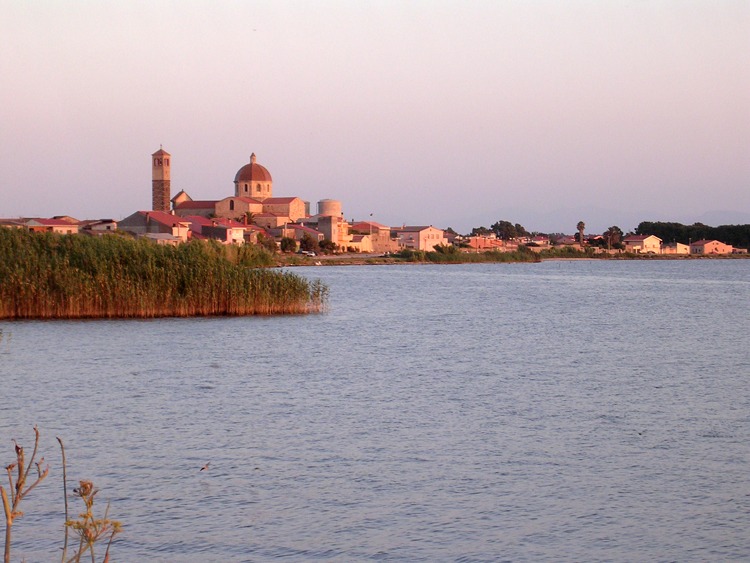
The Hidden Gem: San Salvatore Di Cabras in Sardinia
Tucked away on the island of Sardinia, San Salvatore di Cabras stands as perhaps the most authentic yet overlooked gem in spaghetti western cinema history. Here, ordinary house facades were transformed into Wild West sets for numerous productions, significantly the groundbreaking 1968 film "Garter Colt," directed by Gian Andrea Rocco and featuring a rare female lead.
The village's cultural significance extends beyond film—its ancient church sits near the Tharros archaeological site and was originally dedicated to pagan water worship, adding layers of history to this cinematic treasure.
You'll find this village nearly deserted much of the year, but it springs to life during the Festival of San Salvatore, when barefoot young men carry their patron saint in one of Sardinia's oldest processions. Unlike Monument Valley's iconic desert landscapes which defined American westerns, this Mediterranean location offered filmmakers a distinct visual language while maintaining the genre's themes of isolation and vulnerability.
Behind the Scenes of "Garter Colt" (1968) in Sinis
While most film historians recall "Garter Colt" for its groundbreaking female protagonist, few know the fascinating production details that unfolded in Sardinia's sun-drenched Sinis peninsula. This 1969 Spaghetti Western, directed by Gian Andrea Rocco, was filmed entirely in this remote Sardinian region.
What makes "Garter Colt" special among Italo-Westerns isn't just its unique filming location, but its revolutionary approach to the Western genre. The film features a heroine who conceals her Colt revolver in her garter—a fresh twist that caught Quentin Tarantino's attention, who now considers it iconic.
Star Nicoletta Machiavelli described her time filming in Sinis as "incredible." The production employed a distinctive cinematographic collage method, blending various stylistic approaches throughout—a technique as innovative as its female-led storyline. The film's approach to blending genres mirrors the experimental nature of The Horror of Party Beach, which similarly combined horror elements with teen beach movie aesthetics to create something uniquely captivating for audiences.
Transforming Rural Sardinia Into the Wild West
Few Western film fans realize that beneath Sardinia's Mediterranean charm lies a fascinating cinematic secret—an entire village that once served as a stand-in for America's frontier towns. San Salvatore di Cabras underwent a remarkable transformation, with house facades redesigned to create an authentic Wild West atmosphere where Spaghetti Western magic unfolded.
When you visit the Sinis peninsula today, you'll discover:
- A saloon-styled bar that preserves the Western ambiance from filming days
- The picturesque Church of San Salvatore, which added cultural depth to productions
- Views of Tharros archaeological site that formed backdrops for films like "Garter Colt"
While Sergio Leone never shot in Sardinia, these locations represent an underappreciated chapter in Spaghetti Western history, where Cabras became the unlikely stand-in for America's dusty frontier towns.
The Abraxas Bar: A Living Museum of Western Film History
At the heart of San Salvatore di Cabras stands the Abraxas Bar, a time capsule that brings the Spaghetti Western era vividly to life. Step inside and you'll feel transported to an authentic Wild West saloon that captures the essence of Italian Westerns in their heyday.
The bar's owner enthusiastically shares tales of when Sardinia served as a backdrop for numerous Westerns, offering insights into the filmmaking that once thrived here. Though the original film locations have vanished with time, the Abraxas preserves this unique history through its carefully curated decorations and furnishings.
For film enthusiasts exploring Sardinia's connection to Spaghetti Westerns, a visit to this living museum isn't optional—it's essential to understanding how this remote Mediterranean island transformed into America's Wild West.
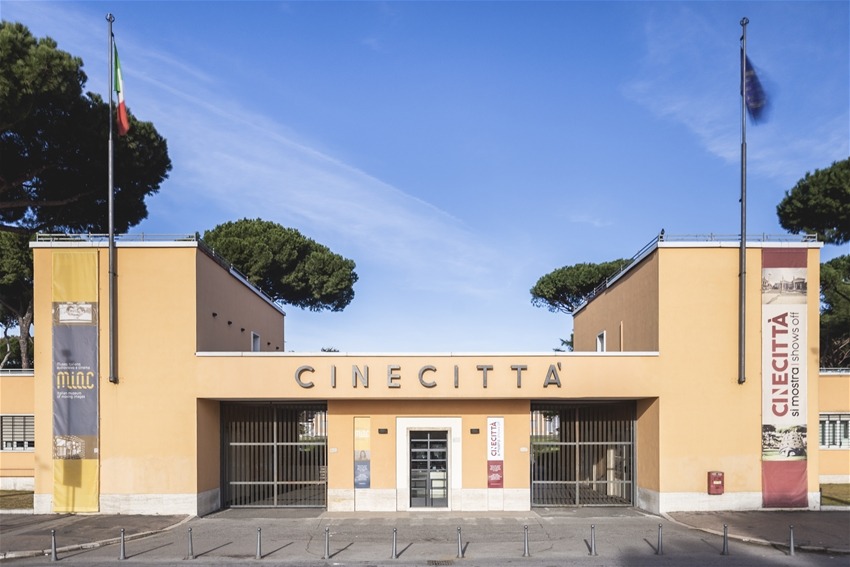
Cinecittà Studios: Rome's Spaghetti Western Factory
The sprawling Cinecittà Studios, located just outside Rome's city center, became the beating heart of the Spaghetti Western revolution during the genre's golden age. Nicknamed "Hollywood on the Tiber," these facilities provided directors like Sergio Leone with extensive backlots and sets to craft their distinctive Western aesthetics without traveling to America.
You'll find Cinecittà served as more than just a filming location—it functioned as a complete production hub where the genre flourished through:
- Cost-effective facilities that allowed smaller-budget productions to thrive in a controlled environment
- Flexible studio spaces enabling pivotal international collaborations between Italian, Spanish, and American filmmakers
- Convenient proximity to Rome that attracted global talent while maintaining authentic Western visuals
The Festival of San Salvatore: Where Western Culture Lives On
While Cinecittà Studios cemented the Spaghetti Western's visual language on film, Sardinia's Festival of San Salvatore offers you a chance to experience Western culture's living legacy.
Visit San Salvatore di Cabras on the first weekend of September to witness one of Sardinia's oldest festivals. You'll see a thousand barefoot young men carrying the simulacrum through streets that seem deserted throughout the rest of the year. This powerful tradition commemorates the statue's rescue during a 1500s Saracens attack.
As evening falls, the festival transforms into a feast of grilled fish paired with local Vernaccia wine. Many families maintain small houses here solely for this annual celebration, highlighting its cultural significance. The contrast between the village's quiet nature and the festival's vibrant energy mirrors the dramatic landscapes that made this region perfect for Western filmmaking.
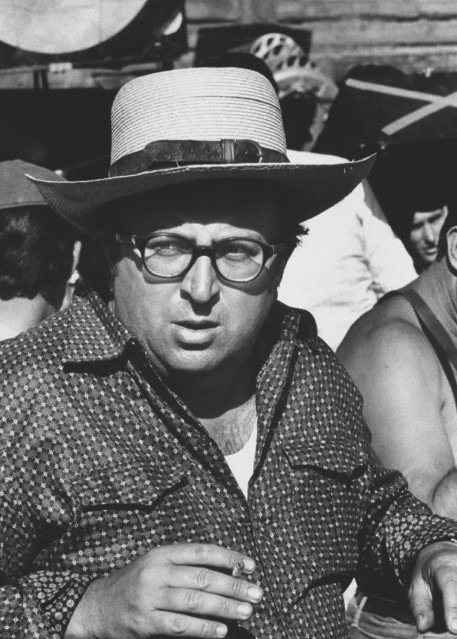
Following Sergio Leone's Footsteps Through Italian Landscapes
Despite Spain's Tabernas Desert claiming most of the spotlight in Spaghetti Western filmography, Sergio Leone's genius extended beyond those arid plains to embrace Italy's diverse terrain as well. You'll find his cinematic fingerprints across multiple Italian landscapes, from Rome's Cinecittà Studios to the rustic Valle del Treja Park.
- Sardinian Frontiers: In San Salvatore di Cabras, local house facades were transformed into Wild West settings, most particularly in Gian Andrea Rocco's "Garter Colt" (1968)
- Roman Surroundings: While filming his "Dollars Trilogy," Leone frequently utilized locations near Rome when not in Spain's Almería region
- Tarantino's Connection: Quentin Tarantino specifically praised "Garter Colt" for its innovative approach to the genre, featuring a female protagonist and distinctive collage style
The Evolution of Filming Locations in Italian Western Cinema
From humble beginnings in Rome's Cinecittà Studios to sprawling desert landscapes in Spain, Italian Western cinema's choice of filming locations evolved dramatically throughout the genre's golden era. While most fans associate Spaghetti Westerns with Almería's arid terrain, you'll find that Sardinia played a significant role too.
In San Salvatore di Cabras, ordinary house facades transformed into authentic-looking Western towns. The village in Sinis gained prominence when Garter Colt—considered iconic by Tarantino—was filmed there in 1968, using Sardinian landscapes to represent Mexico. Unlike Sergio Leone's For a Few Dollars More, which never shot on the island, this film featured a rare female protagonist.
Today, visit the Abraxas bar to experience Wild West ambiance, especially during the Festival of San Salvatore each September, when the normally quiet village comes alive.
Abril2001, Cabras, CC BY-SA 3.0
Andrea Martella, Ingressostorico cinecitta, CC BY-SA 4.0



